.
Harmony of Design:
Form and Worldview in Classical Chinese Poetry
by Adam Sedia
China’s uninterrupted literary tradition of three millennia is truly one of the world’s cultural wonders. The introduction of traditional Chinese poetry to the West by Ezra Pound and the Imagists sadly occurred with an agenda behind it: they portrayed the compactness of expression in the Chinese language and the visual nature of its writing as a contrast to traditional Western forms and used those features as justification for breaking with those traditions. What they unfortunately and purposefully overlooked, however, was the strong similarity between traditional Chinese and traditional Western forms. Traditional poetry in both cultures has rhyme, meter, and a variety of prescribed forms. This study seeks to tear away the Modernist façade erected around traditional Chinese poetry and show Western readers the true nature of the art, both through an understanding of the Chinese language itself, the traditional Chinese poetic outlook, and some examples from China’s greatest poets, so that they can appreciate Chinese poetry for what it is, not what it has been portrayed to be.
.
Linguistics: How Chinese Functions
Two elements define Chinese poetry: the language itself and its writing system. Chinese is what linguists call an analytical language. Unlike every Western language, it is completely uninflected; its nouns have no cases or genders and its verbs have no tenses or moods. The reader or listener must infer such details from context. Thus, while Chinese expresses ideas more concisely, it also does so less precisely than in Western languages. For example, the common phrase “long time no see” is an actual literal translation of how the phrase “I have not seen you in a long time” would sound in Chinese.
Another important feature of Chinese is its four tones, or alterations of pitch on vowels: the level tone, the rising tone, the “departing” (i.e. falling) tone, and the “entering” or “checked” tone (i.e. falling, then rising). The tones derive from different consonantal endings in non-tonal Old Chinese spoken more than two thousand years ago. Consequently, words that vary only in their tone, while still considered homophones, have different meanings: for example, 詩 shī “poem,” 十 shí “ten,” and 是 shì “be.” (Homophones also exist on the same tone, leading to sometime humorous effect such as in the story “Shīshì shí shī shǐ” (施氏食狮史) or “The Lion-Eating Poet in the Stone Den,” consisting of 94 characters all pronounced “shi.”)
The Chinese writing system—hanzi, or characters—is as important to understanding Chinese poetry as the language itself. A common misconception is that the hanzi are “hieroglyphics” or pictograms. This is only partially true. In fact, hanzi fall into six traditional classifications:
.
Xiangxing
(“imitating the form”) Pictograms 日 “sun”
Zhishi
(“indication”) Abstractions 上 “above,” 下 “below”
Huiyi
(“joined meaning”) Combinations of characters 林 “forest,” a doubled “tree” character
Xiesheng
(“sound agreement”) Combined phonetic and semantic elements 映, “reflection” (yìng), from “sun” and yāng)
Zhuanzhu
(“reciprocal meaning”) Derived from a single word 考 “to verify” (kǎo) and老 “old” (lǎo)
Jiajie
(“borrowing”) Derived from homophones 來 “to come,” from once-homophonous “wheat”
.
The nature of the hanzi also inevitably adds a strong visual element to poetry, with each character having standard poetic associations. The simplest type of association is notional, in which the character evokes an object it represents—note from the table how “reflection” incorporates the “sun” pictogram. Perhaps the most important character association is auditory. Chinese is rife with homophones, in part because tone frequently is the only distinguishing mark between words. As a result, Chinese poetry frequently uses puns, though less often for humorous effect than in English—for example 晴 qíng, “sunny,” with 情 qíng, “love” or “affection.” Finally, character associations may be contextual, based on their prior use in a familiar literary context. This last association presumes an educated reader familiar with the historical and cultural context of the poem.
.
Poetry: Meter and Form
As Professor James J.Y. Liu remarks in his indispensable treatise, The Art of Chinese Poetry, Western poets have tended to exaggerate the visual effects of Chinese poetry while neglecting its auditory effects. Considered from this perspective, traditional Chinese poetry is constructed remarkably similarly to tradition Western verse. Hanzi characters are always monosyllabic, meaning that in poetry the number of syllables always equals the number of characters in a line, and the number of syllables in each line decide the rhythm. Variation in tone functions similar to the way stress does in English. All Chinese poetry also invariably features end-rhyme.
From these individual verses a few standard forms emerged, similar to the use of quatrains or heroic couplets in English verse. The oldest form is tetrasyllabic verse, which is the earliest form, appearing in the Shijing or Classic of Poetry (詩經), one of the oldest surviving poetry collections in the world, consisting of 305 songs dating between the 11th and 7th centuries BC and, according to tradition, compiled by Confucius (551-479 BC).
“Ancient verse” first appears during the Han Dynasty (206 BC—AD 220), and consists of either exclusively five or exclusively seven syllables in each verse. “Modern style,” or “regulated verse” first appears during the Tang Dynasty (618-905), retains the five-or-seven syllable length of ancient verse, but restricts the poem to eight lines with the four middle lines forming two antithetical couplets, maintains the same end rhyme throughout the poem, and uses a fixed tone pattern in each line. Lyric verse, also beginning in the Tang, consists of verses of varying length, intended for music. Finally, dramatic verse first appears during the Yuan Dynasty (1279-1368), is similar to lyric verse, but with more freedom in verse length.
Chinese poetry also uses literary devices familiar in the West. Alliteration based on the initial consonant sounds, is employed for musical effect, and often occurs in the antithetical couplets of modern verse. “Rhyming compounds” or internal rhymes of consecutive words are used for the same effect (e.g. 霧樹 wù shù, “misty trees”). Reduplication, or repetition of a word, used either for emphasis or having an independent meaning, functions as a special type of rhyming compound. Onomatopoeia also feature frequently.
As for poetic language, Chinese poetry uses “compound imagery,” which is akin to the Western idea of metaphor, in which an individual or local image features for a concept instead of a more generalized “symbol.” Indeed, Professor Liu remarks that some Chinese poets resemble the English Metaphysical Poets in their use of “far-fetched conceits.” The imagery often provides a revelation of the poet’s personality, but there is never a personalized system of symbols as with Blake or Yeats. It is also common for a poet to develop a conventional or cliché comparison in novel or interesting ways. And Chinese poetry tends to be highly allusive, with references to history or the Confucian Classics (see below) serving the same function as images.
.
The Chinese Poetic Worldview
Understanding Chinese poetry also requires understanding the worldview of the minds and culture that produced it. Perhaps the most important fixture of Chinese poetry is nature. Nature is treated as a thing in itself, not as a manifestation of any Creator, neither benign nor hostile. The poet does not view nature from a personal point of view, but treats it “as it always is.” There is also a keen awareness of time, expressing regret over its inevitable passing. The poetic voice often places itself into time by giving a clear indication of the season and the time of day. Nostalgia is a common theme, and poems often demonstrate a strong sense of history, often in contrast to the permanence of nature. The Chinese sense of space, by contrast, is fixed. China is large and historically a nation of land-bound farmers, and thus its poetry demonstrates little sense of wanderlust.
Some attitudes in Chinese poetry vary from their Western counterparts. Leisure in Chinese poetry is not derogatory, but treated as freedom from worldly cares or being at peace. Wine is viewed similarly. 醉 cuì does not mean “drunk” in the sense of gross sensual enjoyment, but as an escape from the preoccupations of normal life. Love, too, unlike European Romantic love, is not an absolute force that frees the individual from moral responsibilities. Instead, love is “sensible” and “realistic,” having its proper place in life, but not elevated above everything else. Love in Chinese poetry can be serious, light-hearted, passionate, or erotic, but it is hardly ever Platonic.
.
Illustrations: Tang Poetry
The period of the Tang (唐) Dynasty (618-907) is considered one of China’s golden ages, a time of peace, prosperity, and political unity during which the arts flourished. Poetry flourished in particular, and Tang Poetry is still considered “the golden age of Chinese poetry.” The Quan Tangshi (全唐詩 “Complete Tang Poems”), a 1705 anthology of Tang poetry, contains 48,900 poems by more than 2,200 poets—conveying a sense of the ubiquity of the art at the time.
Two of China’s greatest poets, Li Bai (701-762) and his friend Du Fu (712-770), define the “High Tang” style. Other noted poets of the age include Chen Zi’ang (661-702), who abandoned the florid court style in favor of “authentic” poetry that included political and social commentary; Zhang Xu (658-747), also famous as a calligrapher; Wang Wei (699-759), also famous as a painter and whose poetry has been called “a painting within a poem;” Bai Juyi (772-846), known for “speaking truth to power;” Li He (790-816), known as the “Chinese Mallarmé;” Li Shangyin (813-858), known for his abstract, dense, allusive style; and even the emperors Taizong (598-649) and Xuanzong (685-762).
First we examine “On Leaving the Tomb of Grand Commander Fang” by Du Fu. The original text and transliteration of the poem (into modern standard Mandarin) are:
.
别房太尉墓
他乡复行役,驻马别孤坟。
近泪无干土,低空有断云。
对棋陪谢傅,把剑觅徐君。
唯见林花落,莺啼送客闻。
.
Bié fáng tài wèi mù
Tāxiāng fù xíng yì, zhù mǎ bié gū fén.
Jìn lèi wúgān tǔ, dīkōng yǒu duàn yún.
Duì qí péi xiè fù, bǎ jiàn mì xú jūn.
Wéi jiàn lín huā luò, yīng tí sòng kè wén.
.
Before exploring the meaning of the poem, it is important to note the prosody of the original. Contrary to the image of it presented by the Imagists, who first popularized it in the West, here we see classical Chinese poetry demonstrating all the strictures of classical Western poetry. First, it has meter. Note the modern verse form of eight verses of five syllables each—a uniformity displayed especially clearly in the original Chinese, where each syllable equates to a single character.
Just as notably, the poem rhymes. The rhyme scheme consists of two sets of near rhymes: fén-yún-jūn-wén and yì-tǔ-fù-luò. It should also be emphasized that what Du Fu would have recited sounded nothing like the modern standard Mandarin rendition given above. Even though Du Fu wrote in largely the same characters as present-day Chinese, like all languages Chinese evolved over time (Mainland China adopted a simplified system of characters in 1956, while diaspora communities still use traditional characters. The simplified system remains the topic of intense debate). Fourteen centuries ago the poets of the Tang Dynasty spoke Middle Chinese, which underwent drastic changes to evolve into modern Mandarin Chinese (and less drastic changes into modern Cantonese). Taking this difference into account, however, the rhyme scheme becomes even more regular: /bjun/-/hjun/-/kjun/-/mjun/ and /ywek/-/thuX/-/pjuH/-/lak/.
Now with an understanding of the structure of the poem, we can address its meaning and significance. No English translation appears to convey the poem’s rhyme and meter, so this author presents an original translation:
.
Farewell to the Tomb of Grand Commander Fang
by Du Fu (712-770 AD)
translation from Mandarin Chinese by Adam Sedia
On a journey back to a distant land,
I halt my horse to greet a lonely grave.
No dry earth now remains where my tears land;
Low-lying clouds float broken, wave on wave.
I, who once played chess with a lord so grand,
Now calmly grip the sword my lord would have.
I just see forest petals falling and
Hear the farewell cry the orioles gave.
.
This poem illustrates Du Fu’s masterful use of metaphor, transforming a visit to a tomb into a meditation on death. The poetic voice addresses the deceased official who during life enjoyed a prestigious career, serving as one of three “ducal ministers” directly under the emperor, but now relegated to a “lonely tomb” in a “far place.” The central pair of contrasting couples (lines 2-3 with lines 4-5) contrasts the bleak scenery and tears likened to rain with memories of the living premier and a description of his pastime and favorite object, emphasizing the poignancy of the loss. In the closing lines the poetic voice “snaps out” of the memories, returning to the scene of nature before him, illustrating the Chinese sense of nature’s permanence as contrasting with the evanescence of human life. What remains in the end is nature. Yet in the beauty of the scene—flower petals falling (indicating springtime) and birds singing—the poetic voice finds no solace, but only emptiness. This is not a poem about immortality, not even in the sense of memory. Instead, it mourns the transience of life and the loss of friendship without expressing hope for any transcendent life.
Du Fu’s contemporary and friend Li Bai (called Li Po in older sources), is regarded as the other great master of Tang poetry. One example of his many poems is the following:
.
金陵酒肆留别
风吹柳花满店香, 吴姬压酒唤客尝
金陵子弟来相送, 欲行不行各尽觞
请君试问东流水, 别意与之谁短长
.
Jīnlíng jiǔsì liúbié
Fēng chuī liǔ huā mǎn diàn xiāng,
wú jī yā jiǔ huàn kè cháng
jīnlíng zǐdì lái xiāng sòng,
yù xíng bù háng gè jìn shāng
qǐng jūn shìwèn dōng liúshuǐ,
bié yì yǔ zhī shéi duǎn cháng
.
In contrast to Du Fu’s modern style poem above, this short poem of Li Bai illustrates the ancient style, with seven syllables to a verse (although both poets wrote in both styles). Here the rhyme scheme is consistent throughout: xiāng- cháng-sòng-shāng-shuǐ-cháng, or /xjang/-/dzyang/-/suwngH/-/syang/-/swijX/-/drjang/ in Middle Chinese.
As with the Du Fu poem, this author provides an original translation:
.
Farewell at Jinling Tavern
by Li Bai (701-762 AD)
translation from Mandarin Chinese by Adam Sedia
The wind blows willow blossoms, fills the inn with fragrant scent.
A girl from Wu asks guests to taste wine—not for their consent.
Young men from Jinling come to say farewell without lament.
Whether he wants to leave or not, each drinks till he is spent.
Please, my lords, ask these waters flowing towards the orient
If they can travel farther than a friend’s love truly meant?
.
In stark contrast to Du Fu’s poem, Li Bai gives us a merry song celebrating life and friendship. As in Du Fu’s, the scenery here is in springtime, indicated by the willow-cotton blowing in the wind, sweetening the air—a springtime that brings joy and anticipation. The poetic voice is about to embark on a journey, and has friends and a friendly serving-girl to ease him before he departs. The scene also captures the Chinese attitude towards drinking and leisure as freedom from care rather than crass sensuousness. As in Du Fu’s poem, Li Bai concludes with a contemplation of nature, this time the mighty Yangtze River (which flows through Nanjing). But in stark contrast to Du Fu’s poem, nature does not dwarf humanity. Instead, Li Bai subordinates the river—China’s longest and widest—to human friendship, telling his friends to ask it mockingly if it extends farther than a friend’s love.
Many more poems of these two great Tang masters are worth reading and studying, as are the many works of the Tang masters briefly highlighted above. The two poems selected here indicate not only the two main styles of Chinese verse, but illustrate opposite ends of the wide emotional spectrum covered by Chinese poetry, while at the same time sharing formal and stylistic similarities demanded by form and tradition. Just as the sonnet in Western tradition can fit an infinite range of subject matter, ideas, and emotions into its formal strictures, traditional Chinese poetry is just as versatile and just as formal.
.
Poetry in Chinese Society
Poetry also played a significant role in Chinese society, not only for entertainment. The Chinese imperial examination (科舉, kējǔ: “subject recommendation”) was the world’s first civil service examination, founded on the concept that government positions should be filled by merit as determined by a written examination, rather than birth. Written examinations for certain government positions, especially clerical ones, had been in use since the reign of Emperor Wen of the Han Dynasty (r. 180-157 BC), but the standard written examination for entry into imperial service was formally introduced in 607, during the Sui Dynasty, and would remain in continuous use until its formal abolition in 1905. But this represented only a formal rather than an actual abolition: aspects of the imperial examination remain to this day in the civil service examinations in both mainland China and Taiwan.
Central to the imperial examination was knowledge of the Confucian Classics, particularly the books known as the Thirteen Classics, which included the Shijing. In the imperial examination, the Shijing carried an orthodox Confucian interpretation explaining how each poem responded to moral and social conditions of the age. Examinees were expected to know and recite each orthodox interpretation to demonstrate their fitness for office. An analogous textual treatment can be seen in the Bible’s Song of Songs, which on the surface is an erotic love poem but carried an orthodox interpretation as describing Christ’s love for the Church.
But the examination required not just a knowledge of the classics of poetry, but poetic composition, as well. Starting in the Tang Dynasty (618-905), the examination contained a poetry section requiring the examinee to compose an ancient style poem in five-character, 12-line form and a fu (rhapsody) composition of 300 to 400 characters. Interestingly, the testing of poetry was the subject of continued controversy. On one hand, pragmatists like the chancellor Wang Anshi (1021-1086), although a poet himself, considered poetry irrelevant to the functions of a bureaucratic office. On the other hand, the statesman Su Shi (1037-1101), Wang’s contemporary and also a poet, argued that the poetry requirement had not obstructed selection of the great ministers of the past, that the study and practice of poetry encouraged careful writing, and that the grading of poetry was more objective than for the prose essays, due to the strict and detailed rules for writing verse according to the formal requirements.
The changing content of the examination reflected this controversy. The poetry section was briefly abolished for examination year 833–34, then in the 1060s Wang Anshi removed the poetry sections once more, then briefly reappeared until they were finally restored after 1126. In the Mongol Yuan dynasty (1279-1368), poetry was abolished again, which would remain in effect until its final revival in 1756 by the Qing dynasty.
.
Conclusion: Poetry as Harmony
Despite the lingering controversy of the role of poetry in the imperial examination (which echoes the longstanding debate in the west over the role of poetry), during the Tang dynasty poetry would have been central to the formation of bureaucrats such as the deceased official mourned by Du Fu. It was their knowledge of and familiarity with the interpretation of the poems of the Shijing that allowed them to hold their privileged government positions. Thus, poetry was natural to their station in life, and poetic thought necessary to, rather than in conflict with, their role as imperial bureaucrats.
Contrast this with the modern civil service system, in the West and elsewhere, where training and examination is almost wholly technocratic. Emphasis is on process and procedure; expertise is preferred as deep but as narrow as possible; and the means are always directed towards the end of compliance with the letter of the law rather than any overarching moral question. The idea of the modern bureaucracy originates in what is termed the Age of Enlightenment—what Edmund Burke called the age of “sophisters, economists, and calculators”—which was dominated by a view of God as a “Great Clockmaker,” and in which all human questions could be reduced to a matter of mathematical principles without any consideration of overarching moral or abstract questions.
And as a consequence of this contrast perhaps we can see in Tang China a much more humane society than the present world dominated by Western-style bureaucracies. Knowledge of poetry is knowledge of humanity, and the creation of poetry—or any art—is the ultimate human act, a combination of literary skill, aesthetic taste, and moral judgment. A government whose agents are trained as poets are bound to act with consciousness of the humanity of those they affect. A government of “sophisters, economists, and calculators” sees the operation of government as a machine, and human cogs who do not fit into its operation are either to be “mended” through forced compliance or, worst of all, discarded. That was the mindset that constructed the great totalitarian horrors of the last century and is very much alive today, both through official repression and social “cancellation.”
In traditional Chinese poetry we can see harmony: human action having its proper place in nature and time, as well as harmony of rhyme and meter. Generations of Chinese emperors and officials wisely saw this harmony as reflecting the harmony of human relations in state and society, and brought into their service only those who could demonstrate that they understood that harmony. That wisdom should not be lost on us; it is only a return to poetic thinking that can combat the mechanical coldness of the totalitarian mindset.
.
Sources
Liu, James J.Y. The Art of Chinese Poetry. Univ. of Chi. Press, 1962. 40.
Sagart, Laurent. “The origin of Chinese tones” (PDF). Proceedings of the Symposium/Cross-Linguistic Studies of Tonal Phenomena/Tonogenesis, Typology and Related Topics. Institute for the Study of Languages and Cultures of Asia and Africa, Tokyo Univ. of Foreign Studies. 1999.
Owen, Stephen. Foreword. The Book of Songs (Shijing): The Ancient Chinese Classic of Poetry. Tr. Arthur Waley. Ed. Joseph R. Allen. Grove Press, 1996. pp. xv-xxiv.
Yu, Pauline. “The Chinese Poetic Canon and Its Boundaries.” Boundaries in China. Paul Cannon, ed. Reaktion Books, 1994. 105.
Liu Haifeng, Li Bing, Chen Xue. History of the Chinese Imperial Examination. Springer Nature Singapore, 2025. 65, 98-102, 878.
Murck, Alfreda. Poetry and Painting in Song China: The Subtle Art of Dissent. Harvard University Asia Center for the Harvard-Yenching Institute, 2000. pp. 51-52.
Yu, Jianfu. “The Influence and Enlightenment of Confucian Cultural Education on Modern European Civilization.” Frontiers of Education in China. 4(1): 10-26. 2009.
.
.
Adam Sedia (b. 1984) lives in his native Northwest Indiana and practices law as a civil and appellate litigator. He has published four books of poetry and his poems, essays, and fiction have appeared in various literary journals. He is also a composer, and his musical works may be heard on his YouTube channel.



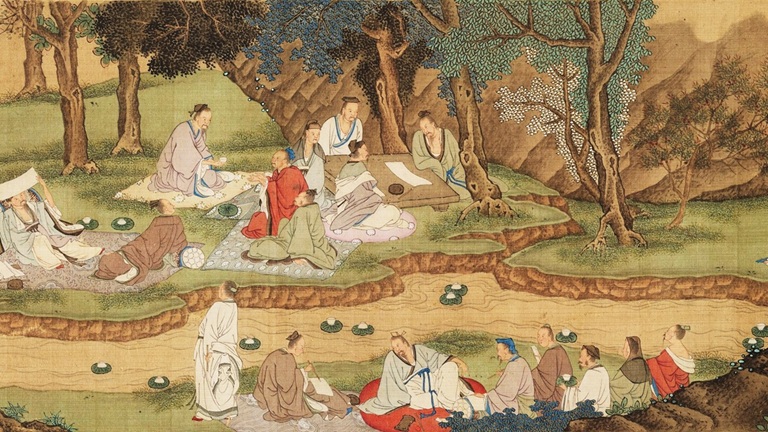


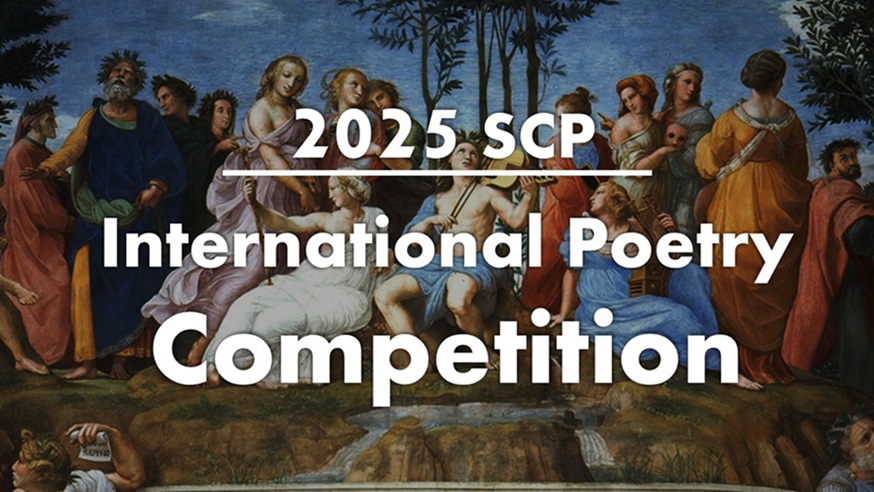

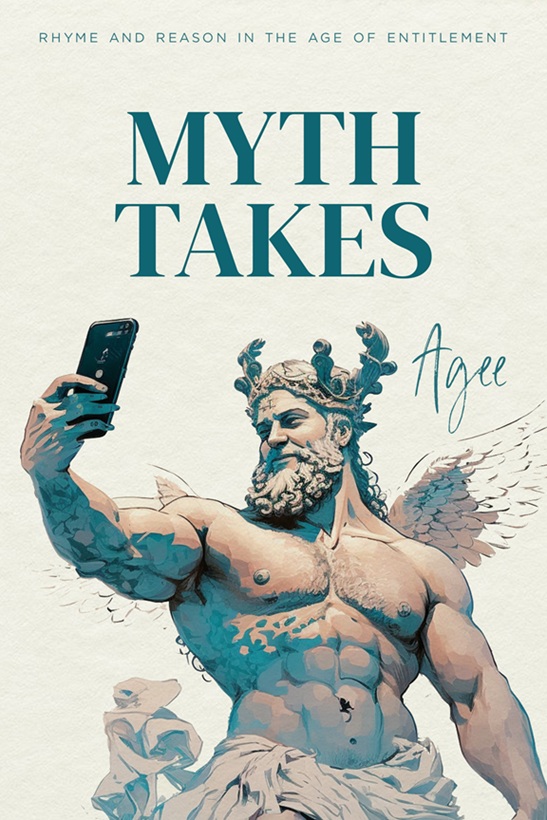
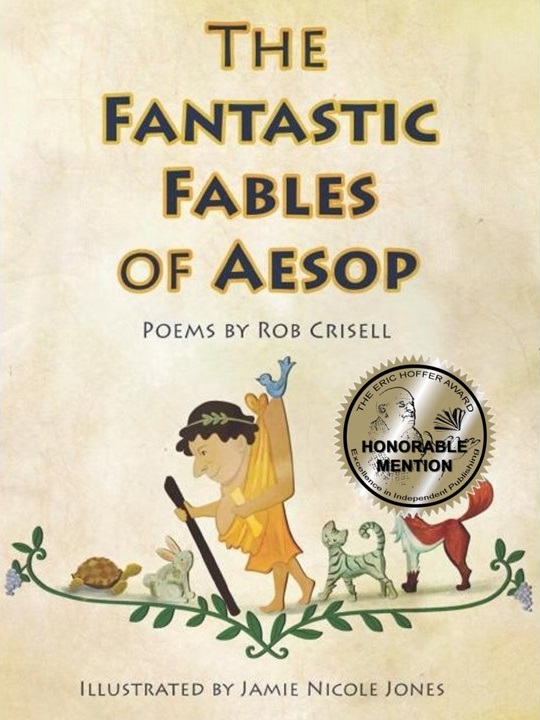
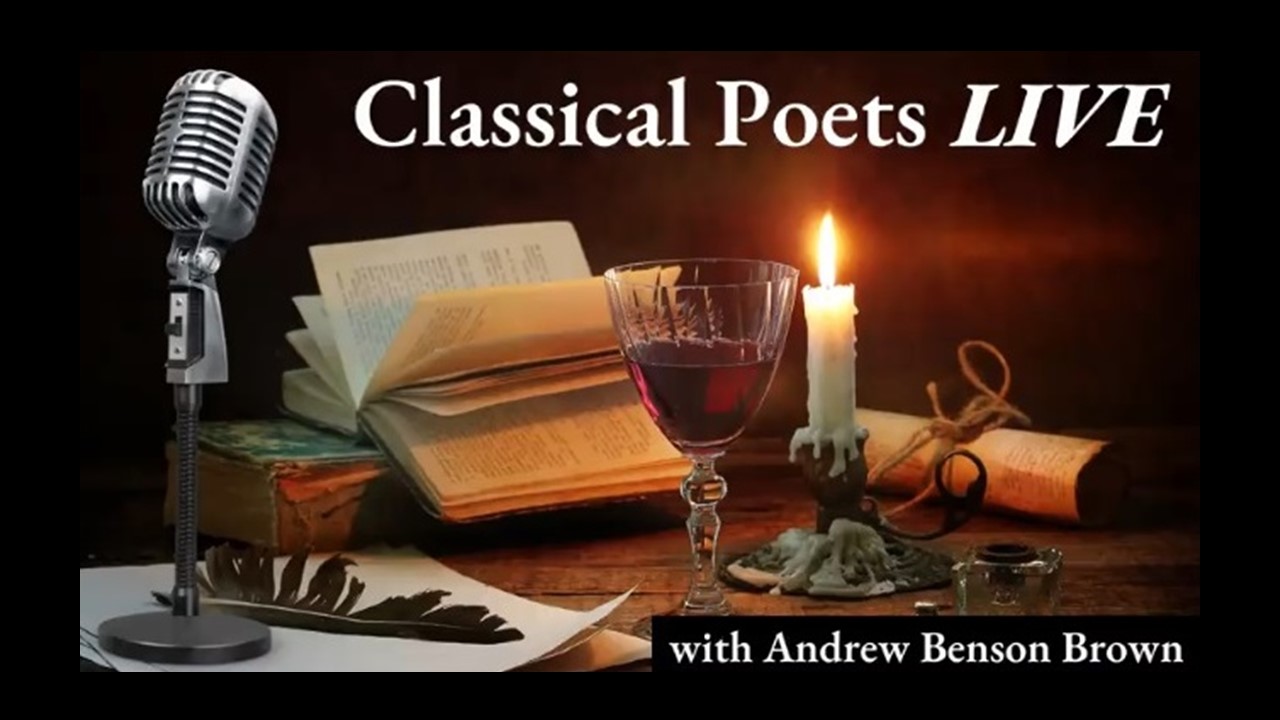

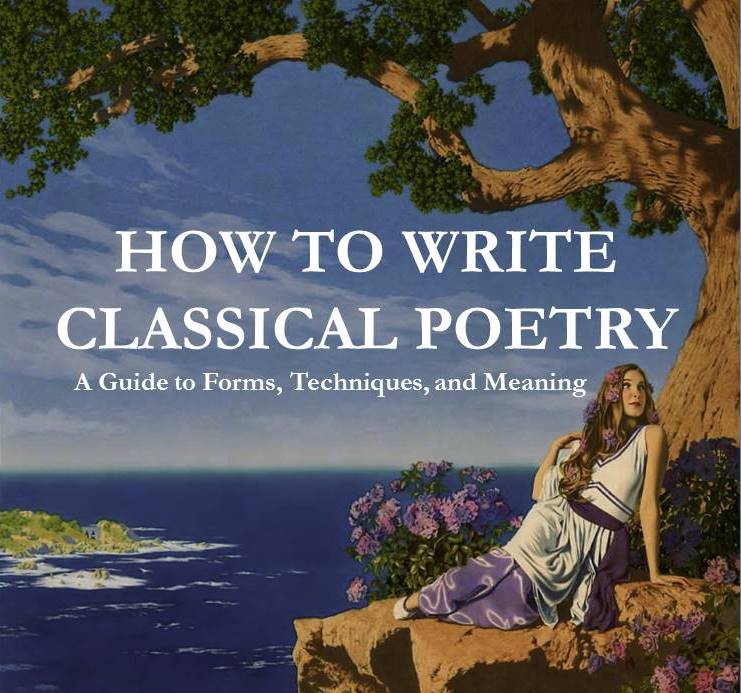




Adam, your great essay affected me on so many levels. My great uncle Reno Backus was a medical missionary to China in the 1930’s until the Japanese occupation and again after WWII until Mao came to power. He sent my grandfather small books of poetry that were translated into English, and I read as a young child which I loved both for the rhymes and for the art. I particularly remember Li Po. Second, as a student at Fort Bragg studying Vietnamese, I learned a language first recorded by Portuguese monks in Latin script that had five diacritical markings and also was monosyllabic with each word having up to five different meanings. As one who became an interpreter for American Generals in addition to his basic intelligence duties, since I also had a pitch perfect ear for music, I was able to faithfully translate what was said and respond in a sing-song manner so the Vietnamese could understand what they were saying. Third, I had a modicum of Chinese history courses and particularly recall the Confucian based civil service exams with the memorization of texts along with the essential proper writing that the participants had to know and use. Your wonderful essay adds so much to my knowledge and appreciation of Chinese poetry with the excellent poetry translation examples.
Thank you so much for your comment. It’s wonderful to hear that my essay struck a chord. My own grandfather was in Qingdao as a marine from 1945-46. I wonder if he ever crossed paths with your great uncle.
While I always found Chinese history interesting, the truth is Chinese poetry never really interested me until fairly recently, and when I understood how it really worked and how its introduction to the West came with an agenda, I though I had to write this essay to set the record straight. I am extremely satisfied that you found something to take away from it.
On another note, Vietnamese has an interesting relationship to Chinese. Northern Vietnam came under Chinese rule for several centuries, and (as you know) the cultural impact was profound. Chinese script was used for the Vietnamese language, but because the languages are totally unrelated (Chinese is Sino-Tibetan, Vietnamese is Austroasiatic), the script didn’t quite capture the language. The French priests who first studied the language developed a Latin script transliteration to aid in pronunciation, and that ended up replacing the Chinese script as a more faithful rendition of the sounds. Even after colonial rule, even the most fervid nationalists kept the Latin script because of its accuracy. Korea and Japan also used Chinese script for totally unrelated languages, and they took different approaches: Korea developed its own syllabic script (hangul) and Japan developed two separate syllabaries (katakana and hiragana) to use in combination with the Chinese characters (kanji).
This is a solid and lucid introduction to the classical Chinese tradition in poetry for those of us who only know it from a few scattered translations. Thank you for clearing up my misconception that the Chinese characters are “pictographs” or “hieroglyphics.” And thank you for describing the four “tones” and how they operate in the language. You mention four in standard Mandarin, but I have been told that the Cantonese dialect has six tones. Is this true?
I fully believe that the modernist Imagists made use of what they knew of Chinese to serve their own poetic agenda.
Thank you! It was my goal to clear things up, just as they were cleared up for me when I began researching this topic. I am less familiar with Cantonese, but I looked it up. It indeed has six tones, but essentially it is three tones split between high and low voices (there are also three shortened tones, which leads some linguists to say it has nine tones). It developed from Old Chinese differently from Mandarin and is much more conservative, which aids in reconstructing Old Chinese. On the opposite end is Khmer. It is related to Vietnamese and once had tones, but it imported its script from India, where the languages are not tonal, and after centuries of using a non-tonal script, Khmer lost its tones, which converted into diphthongs. So languages can lose tones as much as they can pick them up.
You are absolutely right about the modernists. Chinese poetry was introduced to the West at exactly the wrong time, and the misconceptions that were intentionally sown with its introduction remain common to this day. That was a huge factor in me wanting to write this.
Fine work, Adam. You really do need to get into Chinese sounds, characters, and even tones to counteract whatever remains of modernist Imagism as an introduction to Chinese poetry. You’ve done it without too heavy a hand that might discourage readers only interested in the English translations they can find. And your monorhymed translation of Li Bai’s “Farewell” shows what might be possible with more attention to formalities of Chinese verse. I’m glad you mentioned the “imprecision” of the language type, to demonstrate one serious challenge to good translation–and one of the strangenesses that might cause readers to be put off by some efforts at more formal translation. “Long time no see” is not an acceptable poetic line when rendered precisely into English. Good readable translators must interpret.
For a solid introduction by way of translation only, I still refer to the volume “Sunflower Splendor,” produced fifty years ago by Doubleday. Used copies are cheap. The title comes from a Li Bai poem which is translated (in rhyme) by Conrad Aiken as an epigraph to the 500+ pages from 3000 years of poetry. The effect is very much one of atmosphere and image that enables readers to discover varied themes you mention, though there is no great attempt to reproduce form. The book was a collaboration of numerous translators, and James J. Y. Liu, whom you cite as one of your sources, was involved. Of great value to comprehending Chinese traditions are the many cultural and historical notes on the same page as each poem. As you’ve indicated, allusion occupies a huge place in Chinese poetry.
Thank you, Margaret. You are absolutely correct: sweeping aside all the misconceptions about Chinese poetry requires a “back to basics” approach. As with any language, how the language works will dictate how its poetry works and how a translator must approach it. Because Chinese is so radically different from any language in the West, I didn’t think I could make any serious exposition of Chinese poetry unless I first discussed the language. I’m glad you didn’t think I got too much “into the weeds” on that part.
I just ordered my copy of “Sunflower Splendor” (very affordable as you promised). I had no idea of its existence – and it’s published by Indiana University Press (my alma mater). I really look forward to delving into it.